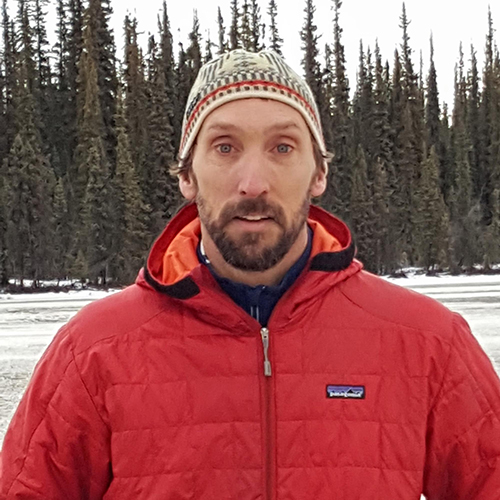Edward Plumb
Location: Fairbanks, AK
Office: NWS WFO Fairbanks Alaska
Job Title: Senior Service Hydrologist
Educational Background:
- Bachelor's Degree in Geography from the University of Alaska Fairbanks
- Bachelor's Degree in Geology from the University of Alaska Fairbanks
- Master's Degree in Atmospheric Sciences from the University of Alaska Fairbanks
Describe the career path that led you to your current job with the National Weather Service.
- In college, I worked as a geology intern for the state and traveled to remote areas of Alaska. After college, I worked as a hydrologist for the U.S. Geological Survey (USGS), which included measuring rivers, glaciers, and groundwater. While in graduate school, I seasonally worked for the NWS as a fire weather technician before landing a Meteorology Intern position at the WFO in Juneau, AK. I later returned to Fairbanks as the Service Hydrologist, a job which combines my passions for forecasting, hydrology, and field work.
What do you do for the NWS?
- The combination of office and field work makes my position very stimulating. This includes maintaining a remote network of river observers, flying in a small plane to monitor the spring ice breakup of the Yukon River, warning communities of threatening ice jams or floods, surveying flood levels, and working with emergency managers. I also work in the office forecasting the weather. In addition, I have worked on international projects that have taken me to Finland and Siberia.
What was the most interesting, exciting, or impactful weather/water event you experienced while working for the NWS and why does it stand out?
- The Galena, AK flood of May 2013. I was monitoring the Yukon River when a massive ice jam developed downstream of the village. Within hours, huge chunks of river ice were backed up for 40 miles and water and ice rapidly inundated the community. Houses were pulverized or lifted off their foundations by the ice flows. Most people were evacuated by plane to Fairbanks. I experienced the disaster first hand for 3-days with little food, water, electricity, and limited access to the outside world.
What made you decide to pursue a career with the NWS?
- I have been fascinated by the dynamics of weather and rivers and the connection between them since I was a kid spending time in the outdoors. My obsession for winter always kept me watching the forecast for the possibility of extreme cold and snow. The NWS gave me the opportunity to turn my hobbies and interests into a career and have a constant eye on the weather. There is also a sense of gratification and purpose by providing forecasts and hazardous weather warnings to the public.
What do you like most about working for the NWS?
- The sciences of hydrology and meteorology are constantly evolving and new technology is always being integrated into the forecast process. This includes new satellite derived products, more robust forecast models, and an increase in the number and types of observations available to forecasters. It is very exciting to be working in a field of cutting edge science. This new information is used to provide core partners and the public with improved forecasts and better lead time for hazardous weather and flooding events, which is a very gratifying.
What advice do you have for someone interested in a career with the NWS?
- Forecast offices are staffed 24/7 and you must be able to meet the demands of working odd hours, which is challenging and should be considered when choosing this career path.
What training or coursework would you recommend to someone interested in following your career path?
- A strong understanding of meteorology and hydrology and the connection between the two is fundamental to working as a service hydrologist. In addition, hydrologic field experience, surveying skills, and a familiarity with monitoring equipment (such as river gages) is beneficial as well. Another important skill is being comfortable with public speaking and the ability to communicate effectively with partners, the media, and the public during flood events.
